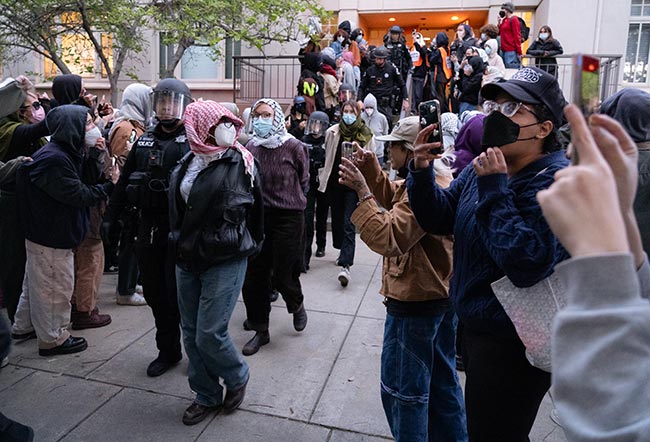Schools provide report cards, district deals with CHS mold and roof repairs
Bonnie Bell, assistant superintendent of business services, asked the school board last meeting to approve and release the district’s School Accountability Report Cards (SARC).
Since 1998, every California school that receives public funding has been required to prepare a SARC, detailing its status in crucial areas like student demographics, academic achievement and the condition of facilities.
As noted in the most recent batch of SARCs, virtually every school in the district has made steady progress in academic achievement as measured by students’ results in STAR standardized tests.
An exception is Danbury School, whose students face a range of disabilities and whose test scores dipped last year. At an earlier meeting, Principal Steve Hamilton explained the lower scores are due to the fact that 2 disabled students who were unprepared to take the STAR with no adaptations did so, scoring poorly. Given that the school has only 46 students, 2 poor test performances is enough to make a significant difference in the school’s achievement statistics.
Board members have praised Danbury, however, for its performance towards its stated goals of “providing a warm, stimulating environment where students are actively involved in learning academics as well as positive values.”
The district’s SARC responses are heartening, according to the board.
“I’m very proud of our district,” board member Jeff Stark said. “I would be thrilled to have my children attend any of our schools.”
To view the School Accountability Report Card for any Claremont public school, visit the CUSD website (www.cusd.claremont.edu) and select “Meeting Agendas.” The SARC for each Claremont school is available in the agenda for the Thursday, January 17 meeting of the school board.
CDE says district responded to CHS leaks, mold
The last meeting of the Claremont Unified School District Board of Education, held Thursday, December 17, included a report on the status of Williams Report complaints within the district.
A Williams Report is a state-mandated process where complaints can be made regarding insufficient instruction materials, unsafe or unhealthy facility conditions, and vacancies or inappropriate assignments among teachers.
In February 2012, a Claremont High School instructor filed a Williams Report citing concerns that ongoing water damage was posing a health threat, including the potential growth of mold, in classrooms in the 700 block of the high school as well as some adjacent campus buildings.
In response, the district hired an independent inspector, who determined there was an ongoing leak from a pipe in a 700-block classroom, a patch of mold in the same classroom and mold on a wooden overhang outside of the classroom. On July 2012, the board reviewed the complaint and determined that, as the areas had been cleaned and repairs had been made, the matter was closed.
The complainant appealed the board’s decision to the California Department of Education, stating that the district had not inspected all of the areas cited in his Williams Report. Furthermore, he contended that repairs, such as the replacement of ceiling tiles, had been largely cosmetic. The problem of ongoing water damage, the complaint emphasized, had not been addressed.
In December 2012, representatives from the California Department of Education came to CHS, a visit that occurred shortly after a rainstorm, according to a CDE report.
After their inspection, they concluded that CUSD had investigated the underlying cause of the water intrusion and “has taken appropriate steps to repair these underlying causes.” Damp or moldy material was removed as well. The district finished with its abatement measures 41 days after the Williams Complaint was filed, well within the mandated 61 days.
Because CHS has flat roofs, a design that has been found to be apt to leaks, the CDE noted in its Williams Facilities Appeal findings that water intrusion and resulting damage is likely to pose an ongoing challenge for the district.
They recommend that the district continue addressing the immediate underlying cause of any leaks, and to remove any damp or moldy material that becomes apparent, reported Kevin Ward, vice principal of human services.
—Sarah Torribio
storribio@claremont-courier.com








0 Comments